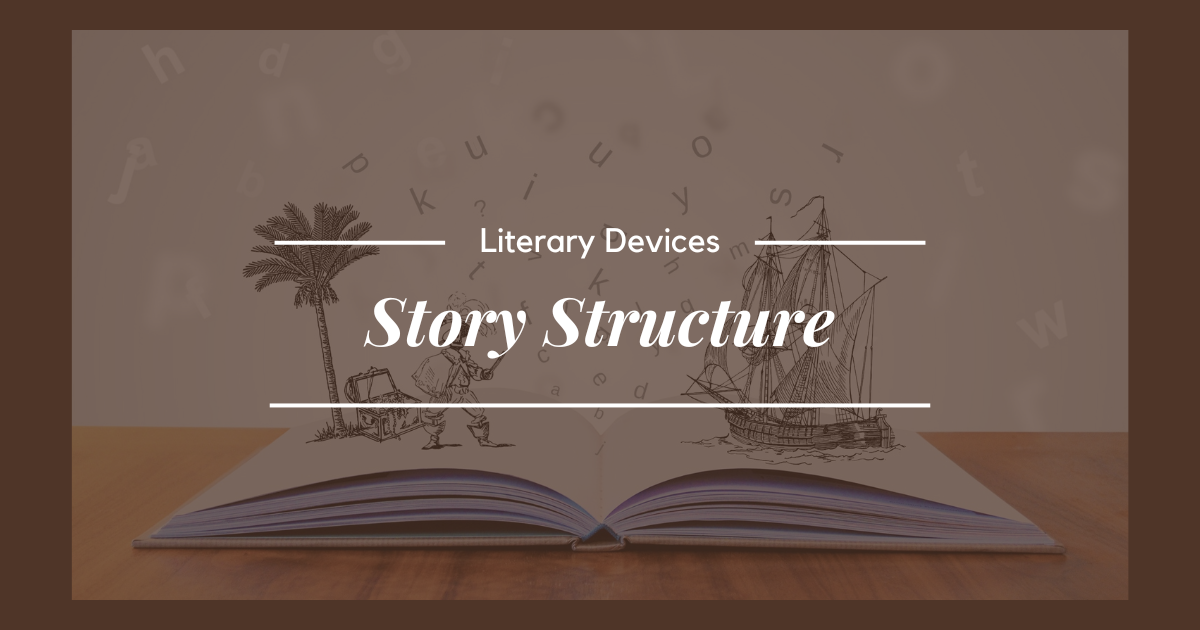Story structure is one of those things that we all learn so early on, that I feel I rarely come across the issue of a book without any structure at all. However, that did happen recently, and boy, did it make me appreciate books with the bare minimum of plot cohesion.
Like the skeleton of a building, story structure provides the framework that supports every element of a narrative. It guides the plot, shapes characters, and ultimately delivers that satisfying reading experience.
Let’s explore what story structure is, its key components, and what happens when a story lacks this framework.
What is story structure, exactly?
Most of us learn at some point about your basic story pyramid (AKA Freytag’s Pyramid). It’s the graph a lot of teachers use to explain the concept of structure, and goes like this:
Introduction → Rising Action → Climax → Falling Action → Resolution
This is a pretty good summary. You meet the characters, a lot of stuff happens to them, the midpoint changes the game, the characters begin hurtling toward their eventual success or doom, and then the story reaches its final closing image.
However, in my opinion, it’s a bit over-simplified. I think a more accurate picture is the Save the Cat structure, which goes like this:
Opening Image → Theme Stated → Set-up → Catalyst → Debate → Break into 2 → Promise of the Premise → Midpoint → Bad Guys Close In → All is Lost → Dark Night of the Soul → Break into 3 → Confrontation → Final Image
Whew. I know that’s a lot of plot beats, so I can understand why some might find it a bit prescriptive. However, this is basically how most stories go.
Whatever graph you look at, structure is really the blueprint that dictates how a story unfolds – from the introduction of characters and settings, through mounting tension and conflict, to the eventual conclusion. While different stories may have unique paths and twists, a solid structure ensures that each part of the narrative works together cohesively.
Okay, so why is story structure important?
Effective story structure provides so much to the narrative. Here’s a short list:
- Clarity and direction: ensuring the story progresses logically and coherently while still being engaging and satisfying
- Emotional impact: building tension and releasing it in a way that resonates – landing moments with maximum impact
- Supporting character development: allowing for the natural progression of characters arcs so that they feel earned and meaningful
- Satisfying resolution: laying the groundwork so that the end feels appropriate, tying up loose ends and delivering on the narrative’s promise
And when a story lacks structure?
Stories without any structure can hardly be considered stories. I’ve also read stories that sort of meet the minimum structure requirement, but the execution is ineffective. Here’s what can happen:
- Confusion or disconnection: frustration due to disjointed or confusing plot points, or failure to ensure emotional moments have the full weight and impact needed for readers to care
- Pacing issues: rushing key events and dragging through less important ones, disrupting the flow and diminishing impact
- Weak character development: lacking clear arcs or motivations, making their decisions feel arbitrary, or making characterization feel flat or inconsistent
- Unsatisfying endings: resolutions that feel abrupt, unearned, or incomplete
Story structure can vary.
As with all things, artful rule-breaking here can be very effective. Structure can feel different across genres or writing styles.
- Nonlinear Narratives: Some stories play with the traditional structure by presenting events out of order. This can create intrigue and challenge readers to piece together the narrative puzzle
- Multiple Storylines: In stories with multiple protagonists or parallel plots, such as Priory of the Orange Tree, the structure may weave together several arcs that intersect or contrast, adding complexity to the narrative
- Experimental Structures: Some stories, especially in avant-garde literature, may subvert traditional structure entirely, using fragmented or cyclical patterns to reflect themes of chaos, memory, or perception
Despite these variations, the fundamental elements of story structure—such as conflict, climax, and resolution – remain essential for maintaining coherence and engaging readers.
Anyway:
A well-structured story is like a well-built house – every part has a purpose, and together, they create something strong, cohesive, and lasting.
If you’re like me, you might like having words to describe why you don’t like a book. So if you find yourself disengaged with a book, the best way to determine if structure is the issue is to see if you can pinpoint the basic elements of said story structure. Is there any mounting tension? Does the flow of events feel logical, and does the conclusion feel like a true culmination of everything that has come before?
Answering these questions might also help you to know whether you should actually finish the book or move on.
Happy reading!
I would love to have you around! Subscribe below.
Check out some of my other recent blogs:







